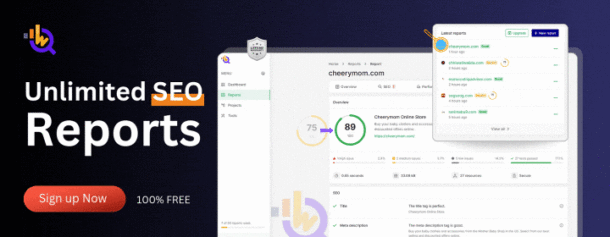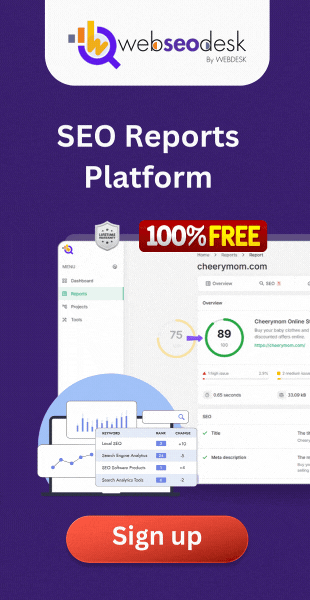Making sure that possible clients may find you quickly in the competitive digital terrain depends on your website being search engine friendly. Search engine optimization (SEO) is the practice of improving the visibility of your website on Google and other search engines such that it most likely shows on the first page of search results for pertinent searches. Whether you own a little business or a big one, using good SEO techniques will boost your web presence, boost traffic, and finally help sales. We’ll walk you through doable actions in this post on maximizing your website for search engines.
- Starting with thorough keyword research,
SEO’s basis is keyword research. You must know what terms your possible clients are looking for if you are to maximize your website. Find high-volume, pertinent keywords in your field of work using Google Keyword Planner, SEMrush, or Ahrefs. Pay particular attention to long-tail and short-tail keywords that fit user intent.
Targeting niche markets calls for long-tail keywords, which are specific and less competitive. Once you have your keywords, deliberately include them in the content of your website—including page names, headers, meta descriptions, and inside the body text. Make sure your material stays natural nonetheless, and avoid feeling overloaded with terms.
- Improve elements of on-page SEO.
On-page SEO is the aspect of your website you could directly improve. These consist of:
Make sure your main keyword is interesting enough to inspire readers to click on your link in the search results and put it in the title tag. For better search result visibility, keep the title around sixty characters.
Meta descriptions give a quick summary of your page content. A well-written meta description can raise click-through rates even when it has no direct impact on ranks. Add target keywords and increase its persuasiveness.
Structuring your material and enhancing readability will help with header tags (H1, H2, H3). Your core keyword should be the H1 tag; later headers (H2, H3) can assist to arrange related subtopics.
Short, clear URLs with your target keywords should reflect your approach. Apart from enhancing SEO, a clear URL structure enhances user experience as well.
- User Experience (UX)
Websites offering a good user experience (UX) are top priorities for search engines. Faster loading speeds, simpler navigation, and a mobile-friendly design help to provide a better UX and thereby raise the ranking of your website.
Your rankings may suffer on a slow-loading website. Analyze and raise the loading performance of your site using Google PageSpeed Insights. Make your website faster by compressing pictures, reducing JavaScript, and using browser cache.
Using mobile-first indexing, Google now ranks pages on your site using the mobile version. Make sure your website on desktop and mobile devices offers a flawless experience and is totally responsive.
Improving user experience depends mostly on a simple, understandable navigation system. With a logical menu system and internal linking, make it simple for consumers to locate what they are looking for.
- Craft Relevant, Excellent Content
SEO depends much on content. Search engines give websites with worthwhile, relevant, and educational material top priority. Your SEO will rise, and user interaction will increase by producing material that answers queries and meets the wants of your audience.
Frequent updating your website with excellent blog entries or articles targeted at particular keywords helps increase natural traffic. Make sure your material offers your readers actual value, is educational, and is well-researched.
Incorporating photos, videos, and infographics will help to improve user engagement and raise time on site—two key considerations for SEO. Make sure multimedia is correctly optimized, though—that is, that alt text for photos, compressed images, etc.
Search engines seek to provide consumers with the best responses to their questions. You will be more likely to rank better for relevant keywords if you produce material directly addressing popular questions in your field of business.
Build Quality Backlinks
Among the most important ranking criteria in SEO are backlinks—links from other websites to your site. Backlinks are seen by search engines as evidence of power and trust. You will more likely rank higher in search results the more excellent backlinks you have referring to your site.
- Emphasize the following techniques in order to create backlinks:
Write pieces for credible industry websites and attach a link back to your website for guest blogging.
To raise the possibility of other websites linking to your material, highlight it via email newsletters, social media, and other outlets.
Discover broken links on respected websites and provide your material in lieu of them to ensure priceless backlinks.
6 Optimize for Local SEO
Local SEO is absolutely important for companies aiming at a local market. Local SEO makes your website show in local search results, as when someone searches for “plumbers in [city] or “restaurants near me.”
Claim and maximize your Google My Business listing with precise business information—name, address, phone number, and working hours. Invite clients to post evaluations; good reviews help your local ranking.
Add location-based keywords to your meta tags and material to enable search engines to grasp your geographic objective.
Make sure your company is featured on pertinent local directories and online review sites to improve local SEO initiatives.
- Track and Evaluate SEO
Once you implement SEO techniques, it’s crucial to monitor and assess your website’s performance. Google Analytics and Google Search Console, among other tools, offer insightful analysis of traffic, user behavior, and SEO performance of your website.
Monitoring your keyword ranks using SEO tracking tools will help. This lets you modify your approach depending on which keywords demand more optimization or are performing well.
Examining the traffic sources of your website will help you to ascertain whether your SEO initiatives are producing the expected outcomes.
Summary
Search engine optimization of your website calls for both constant effort and flexibility. Following these SEO techniques—conducting extensive keyword research, improving on-page features, enhancing user experience, producing quality content, establishing backlinks, and stressing local SEO—you may raise the rating of your website and increase natural traffic. In addition to improving your search engine presence, SEO offers long-term advantages that propel ongoing corporate expansion.












0 Comments